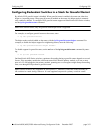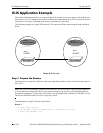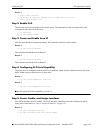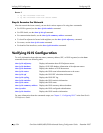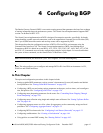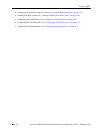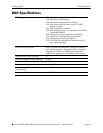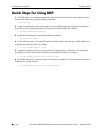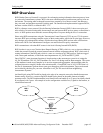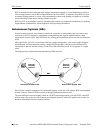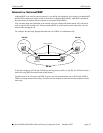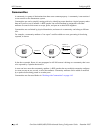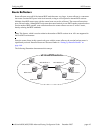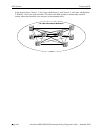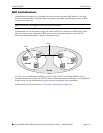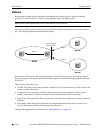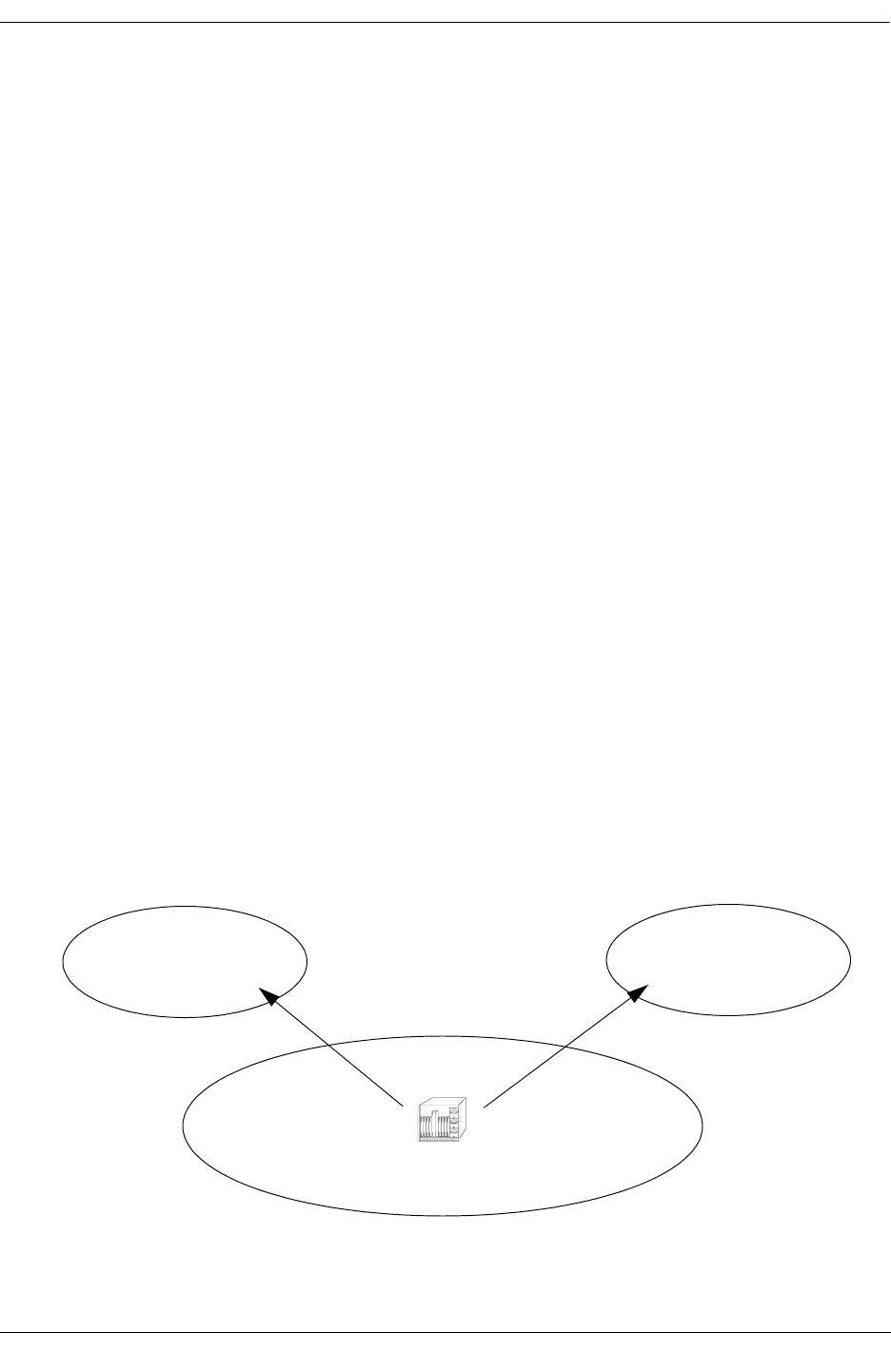
Configuring BGP BGP Overview
OmniSwitch 6800/6850/9000 Advanced Routing Configuration Guide December 2007 page 4-5
BGP Overview
BGP (Border Gateway Protocol) is a protocol for exchanging routing information between gateway hosts
in a network of autonomous systems. BGP is the most common protocol used between gateway hosts on
the Internet. The routing table exchanged between hosts contains a list of known routers, the addresses
they can reach, and attributes associated with the path. The OmniSwitch implementation supports BGP-4,
the latest version of BGP, as defined in RFC 1771.
BGP is a distance vector protocol, like the Routing Information Protocol (RIP). It does not require peri-
odic refresh of its entire routing table, but messages are sent between BGP peers to ensure a connection is
active. A BGP speaker must retain the current routing table of its peers during the life of a connection.
Hosts using BGP communicate using the Transmission Control Protocol (TCP) on port 179. On connec-
tion start, BGP peers exchange complete copies of their routing tables, which can be quite large. However,
only changes are exchanged after startup, which makes long running BGP sessions more efficient than
shorter ones. BGP-4 lets administrators configure cost metrics based on policy statements.
BGP communicates with other BGP routers in the local AS using Internal BGP (IBGP).
BGP-4 makes it easy to use Classless Inter-Domain Routing (CIDR), which is a way to increase addresses
within the network beyond the current Internet Protocol address assignment scheme. BGP’s basic unit of
routing information is the BGP path, which is a route to a certain set of CIDR prefixes. Paths are tagged
with various path attributes, of which the most
important are AS_PATH and NEXT_HOP.
One of BGP-4’s most important functions is loop detection at the autonomous system level, using the
AS_PATH attribute. The AS_PATH attribute is a list of ASs being used for data transport. The syntax
of this attribute is made more complex by its need to support path aggregation, when multiple paths are
collapsed into one to simplify further route advertisements. A simplified
view of AS_PATH is that it is
the list of Autonomous Systems that a route goes through to reach
its destination. Loops are detected
and avoided by checking for your own AS number in AS_PATH
s received from neighboring
Autonomous Systems.
An OmniSwitch using BGP could be placed at the edge of an enterprise network to handle downstream
Internet traffic. However, a router using BGP should not be placed on the public Internet to handle
upstream traffic. The BGP implementation in an OmniSwitch can handle up to 32 peers, but ideally should
be configured with 2 peers. An example of such a configuration would be two (2) paths to the Internet, or
a dual-homed network.
Local Network
AS 1
ISP 1
AS 1
ISP 2
AS 2
OmniSwitch



